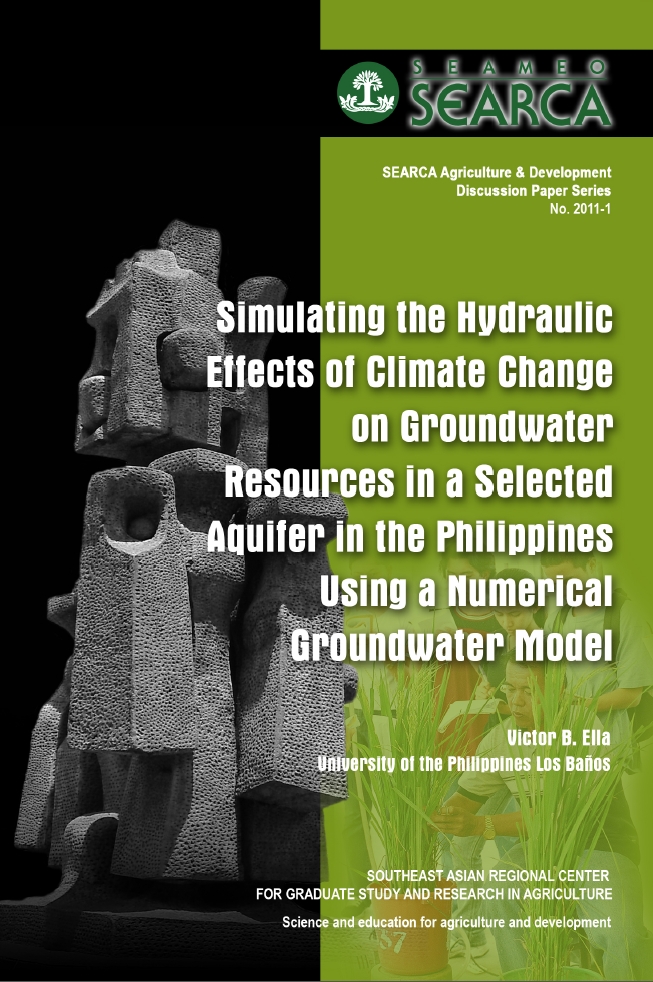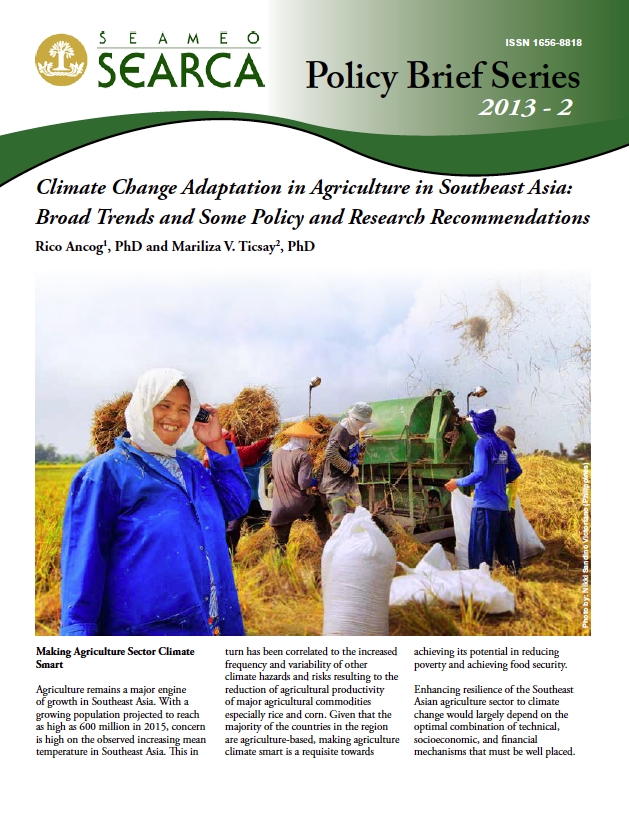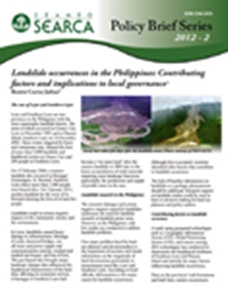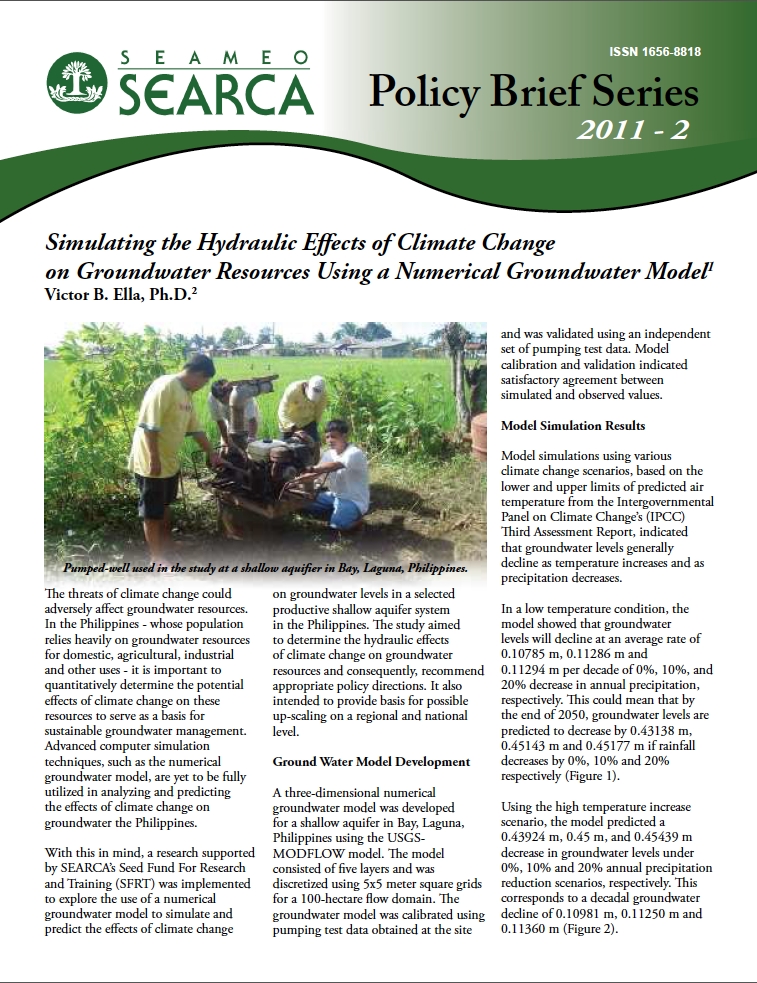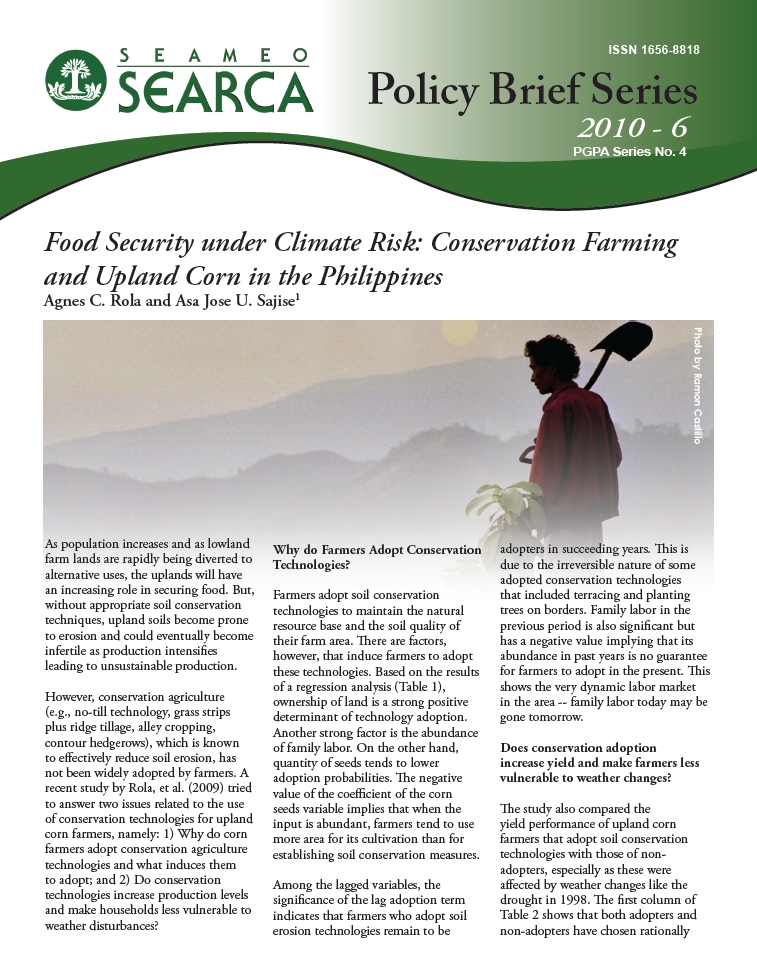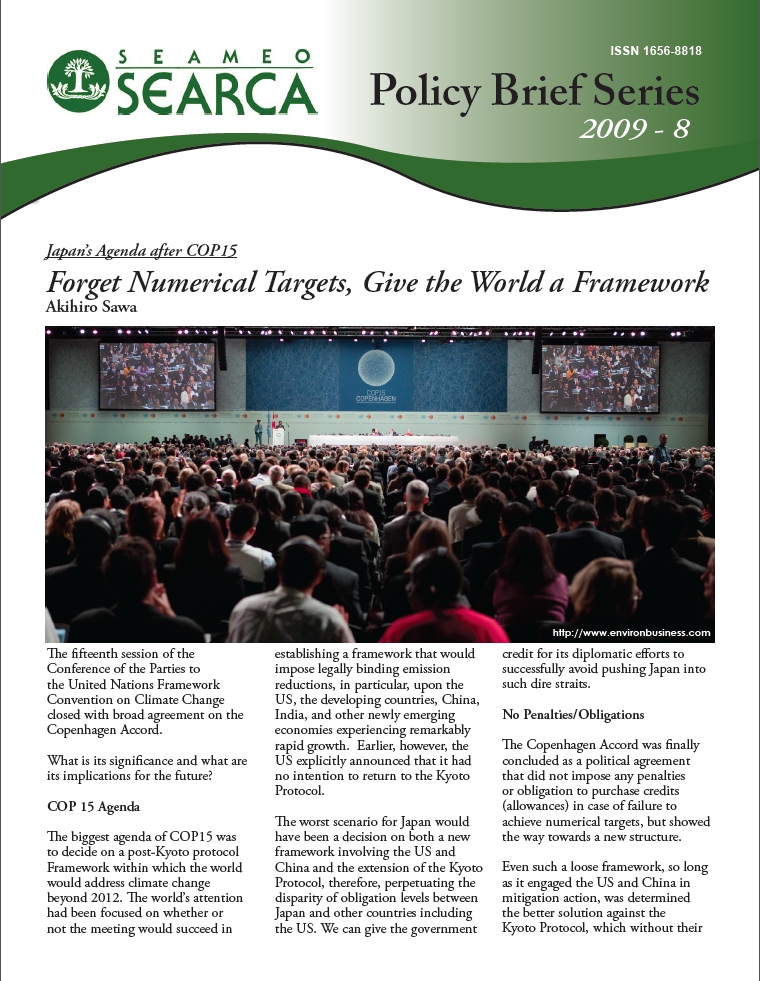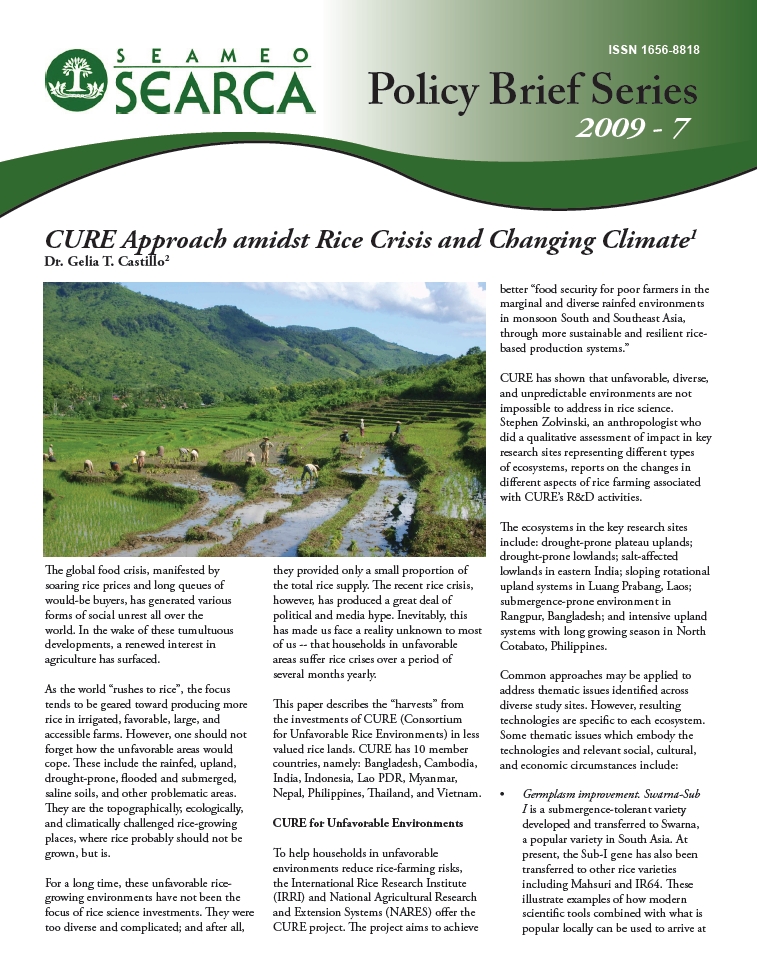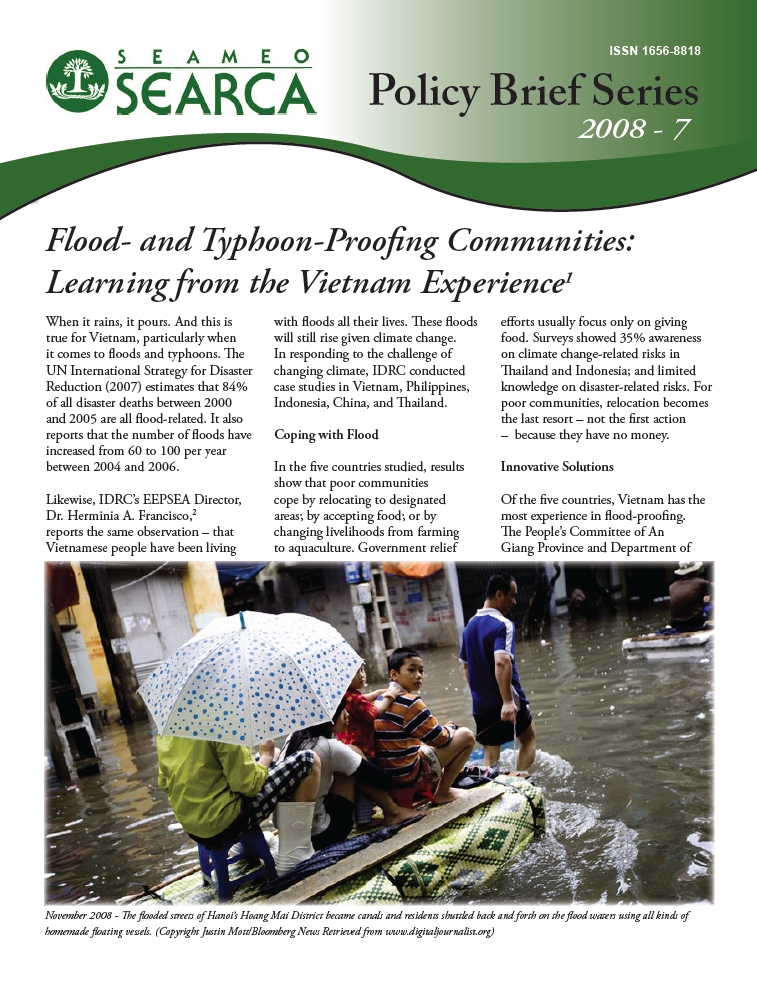SEARCA Publications
Climate change can negatively impact groundwater resources due to its influence on the hydrologic cycle. In view of the Philippines’ heavy reliance on groundwater resources, it is important to quantify these effects to serve as basis for sustainable groundwater resources management. This study aimed to simulate and predict the effects of climate change on groundwater levels on selected productive shallow aquifer system in Bay, Laguna, Philippines, using a numerical groundwater model. Model simulations using various climate change scenarios, based on the lower and upper limits of predicted air…
The Southeast Asian Ministers of Education Organisation (SEAMEO) was established on 30 November 1965 as a chartered international organization whose purpose is to promote cooperation in education, science, and culture in the Southeast Asian region. SEAMEO’s mission is “to enhance regional understanding and cooperation and unity of purpose among SEAMEO Member Countries and achieve a better quality of life through (a) the establishment of networks and partnerships, (b) the provision of an intellectual forum for policymakers and experts, and (c) the promotion of sustainable human resource…
Making Agriculture Sector Climate Smart Agriculture remains a major engine of growth in Southeast Asia. With a growing population projected to reach as high as 600 million in 2015, concern is high on the observed increasing mean temperature in Southeast Asia. This, in turn, has been correlated to the increased frequency and variability of other climate hazards and risks resulting to the reduction of agricultural productivity of major agricultural commodities especially rice and corn. Given that the majority of the countries in the region are agriculture-based, making agriculture climate-smart is a requisite towards achieving its…
The case of Leyte and Southern Leyte Leyte and Southern Leyte are two provinces in the Philippines with the most catastrophic landslide history. The worst of which occurred in Ormoc City, Leyte in November 1991 and in Panaon Island, Southern Leyte on 19 December 2003. These events, triggered by heavy and continuous rain, claimed the lives of more than 5,000 landslide and flashflood victims in Ormoc City and 200 people in Southern Leyte. On 17 February 2006, a massive landslide also occurred in Barangay Guinsaugon, St. Bernard, Southern Leyte where more than 1,000…
The threats of climate change could adversely affect groundwater resources. In the Philippines - whose population relies heavily on groundwater resources for domestic, agricultural, industrial and other uses - it is important to quantitatively determine the potential effects of climate change on these resources to serve as a basis for sustainable groundwater management. Advanced computer simulation techniques, such as the numerical groundwater model, are yet to be fully utilized in analyzing and predicting the effects of climate change on groundwater the Philippines. With this in mind, a research supported by SEARCA’s Seed Fund For Research and Training…
Nearly 100 million rice farmers live in unfavorable rice environments. These communities are among the poorest and most vulnerable to climate change. Solutions are urgently needed to avoid some of the worst impacts of climate change. At a Consortium for Unfavorable Rice Environments (CURE) workshop held in Cambodia in May 2010, with the theme: Responding to changing climate in the unfavorable rice environments, climate specialist Kay Sumfleth outlined some of the expected impacts of climate change. Climate modelers suggest that…
As population increases and as lowland farm lands are rapidly being diverted to alternative uses, the uplands will have an increasing role in securing food. But, without appropriate soil conservation techniques, upland soils become prone to erosion and could eventually become infertile as production intensifies leading to unsustainable production. Farmers adopt soil conservation technologies to maintain the natural resource base and the soil quality of their farm area. There are factors, however, that induce farmers to adopt these technologies. On…
The fifteenth session of the Conference of the Parties to the United Nations Framework Convention on Climate Change closed with broad agreement on the Copenhagen Accord.
The global food crisis, manifested by soaring rice prices and long queues of would-be buyers, has generated various forms of social unrest all over the world. In the wake of these tumultuous developments, a renewed interest in agriculture has surfaced. As the world “rushes to rice”, the focus tends to be geared toward producing more rice in irrigated, favorable, large, and accessible farms. However, one should not forget how the unfavorable areas would cope. These include the rainfed, upland, drought-prone,…
When it rains, it pours. And this is true for Vietnam, particularly when it comes to floods and typhoons. The UN International Strategy for Disaster Reduction (2007) estimates that 84% of all disaster deaths between 2000 and 2005 are all flood-related. It also reports that the number of floods have increased from 60 to 100 per year between 2004 and 2006. Likewise, IDRC’s EEPSEA Director, Dr. Herminia A. Francisco, two reports the same observation – that Vietnamese people have been…

